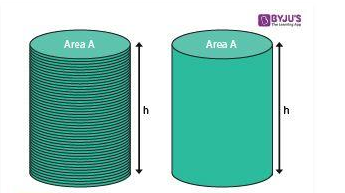
A Colander: More Than Just a Kitchen Tool
The humble colander. Often relegated to the back of a kitchen cabinet, it’s a workhorse that deserves more recognition. This perforated bowl, typically made of metal or plastic, plays a crucial role in countless culinary tasks. But what exactly is a colander, and why is it such an essential tool for any home cook or professional chef? This article delves into the history, uses, types, and care of the indispensable colander.
The History of the Colander
The concept of separating solids from liquids has been around for centuries. Ancient civilizations used rudimentary versions of the colander, crafted from materials like woven reeds or clay pots with holes. These early colanders served the same basic function: draining cooked grains, washing fruits and vegetables, and separating curds from whey in cheese making.
As materials and manufacturing techniques evolved, so did the colander. Metal versions became increasingly common, offering greater durability and resistance to heat. The modern colander, as we know it, is a testament to the enduring need for a simple yet effective tool for liquid separation in the kitchen.
Essential Uses of a Colander
The primary function of a colander is, of course, draining. Here are some of the most common ways to use a colander:
- Draining Pasta: This is perhaps the most iconic use. After boiling pasta, a colander efficiently separates the cooked noodles from the starchy water.
- Washing Fruits and Vegetables: A colander provides an easy way to rinse fresh produce, removing dirt, pesticides, and other unwanted residue.
- Rinsing Canned Beans: Canned beans often have a starchy liquid that can affect the flavor and texture of your dish. Rinsing them in a colander solves this problem.
- Defrosting Food: Place frozen food in a colander set over a bowl to safely defrost it in the refrigerator, allowing the melted water to drain away.
- Straining Broth or Stock: Use a colander lined with cheesecloth to strain homemade broth or stock, removing any solids for a clear and flavorful liquid.
Types of Colanders
Colanders come in a variety of shapes, sizes, and materials, each with its own advantages and disadvantages.
Metal Colanders
Metal colanders, typically made of stainless steel, are durable, heat-resistant, and easy to clean. They are a popular choice for both home and professional kitchens. Look for colanders with sturdy bases and well-placed perforations for efficient draining.
Plastic Colanders
Plastic colanders are lightweight, affordable, and available in a wide range of colors. However, they are not as heat-resistant as metal colanders and may stain or warp over time. Choose BPA-free plastic colanders for food safety.
Folding or Collapsible Colanders
These colanders are designed to save space in your kitchen. They can be folded or collapsed flat when not in use, making them ideal for small kitchens or RVs. They are often made of silicone or a combination of plastic and silicone.
Over-the-Sink Colanders
These colanders have arms that extend to fit over your sink, allowing you to free up counter space. They are particularly useful for washing large quantities of fruits and vegetables.
Choosing the Right Colander
When selecting a colander, consider the following factors:
- Size: Choose a size that meets your needs. A small colander is sufficient for rinsing single servings of fruits and vegetables, while a larger colander is better for draining pasta or straining stock.
- Material: Consider the pros and cons of metal, plastic, and silicone colanders. Metal colanders are more durable and heat-resistant, while plastic colanders are more affordable.
- Hole Size and Placement: Look for colanders with evenly spaced holes that are small enough to prevent food from escaping but large enough to allow for efficient draining.
- Base and Handles: A sturdy base will prevent the colander from tipping over, while comfortable handles will make it easier to lift and carry.
Caring for Your Colander
Proper care will extend the life of your colander. Here are some tips:
- Wash after each use: Wash your colander with soap and water after each use.
- Avoid abrasive cleaners: Abrasive cleaners can scratch or damage the surface of your colander.
- Dishwasher safe: Many colanders are dishwasher safe, but check the manufacturer’s instructions.
- Remove food particles: Use a brush or toothpick to remove any food particles that may be lodged in the holes.
- Store properly: Store your colander in a dry place to prevent rust or mildew.
Beyond the Kitchen: Unexpected Uses for a Colander
While primarily a kitchen tool, the colander‘s unique design lends itself to some surprising alternative uses:
- Gardening: Use a colander to sift soil, remove rocks, or wash freshly harvested vegetables from the garden.
- Crafting: A colander can be used as a stencil for creating unique patterns or as a drying rack for small craft projects.
- Organization: Use a colander to store small items like pens, pencils, or makeup brushes.
- Lighting: With some creativity, a colander can be transformed into a unique and stylish light fixture.
The Colander in Pop Culture
The colander has even made its mark in popular culture. The Church of the Flying Spaghetti Monster, a parody religion, uses the colander as a religious symbol. Members often wear colanders on their heads as a sign of their faith. This unconventional use has brought the humble colander into the spotlight and sparked conversations about religious freedom and satire.
Conclusion: The Underrated Essential
The colander is a simple yet indispensable kitchen tool that performs a vital function. From draining pasta to washing fruits and vegetables, its versatility makes it a must-have for any cook. With a wide variety of types and materials available, there’s a colander to suit every need and budget. So, the next time you reach for your colander, take a moment to appreciate this underrated essential. [See also: Different Types of Kitchen Strainers] [See also: Best Kitchen Gadgets for Home Cooks]
